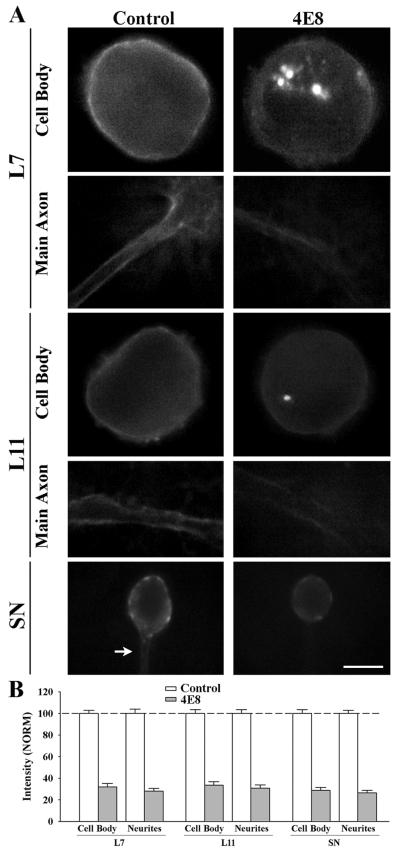Figure 2.
Treatment with anti-ApCAM antibody 4E8 down regulates ApCAM expression on the cell surface membrane of L7, L11 and sensory neurons. A. Epifluorescent images of ApCAM immunostaining of cell body and processes of L7 (n = 7 for each treatment), L11 (n = 7 for each treatment) or sensory neurons (SN; n = 9 for each treatment) following overnight preincubation (14 h) with control or 4E8 (anti-ApCAM antibody). Mid-level focal planes (between substrate and top of each structure) are presented here. After antibody washout, cells were fixed 3 h later and processed for ApCAM immunochemistry of the surface membrane (no detergent added). Treatment with 4E8 significantly reduced surface membrane staining throughout the cells. The bar equals 50 μm. B. Treatment with 4E8 reduced ApCAM on the surface of cells by about 70%. The height of each bar is the Mean ± SEM% for ApCAM staining on the surface of the cell body or processes following treatment with 4E8 normalized to the staining levels measured on the surface of each compartment following treatment with controls (100% ± SEM). ANOVA indicated a significant effect of treatment (df = 5, 40; F = 177.02, p < 0.001). Individual comparisons indicated that treatment with 4E8 significantly reduced ApCAM levels from the cell bodies (p < 0.01) and processes (p < 0.01) of all cells compared to controls. There were no significant differences in surface membrane staining for ApCAM for the control cells (see text).

